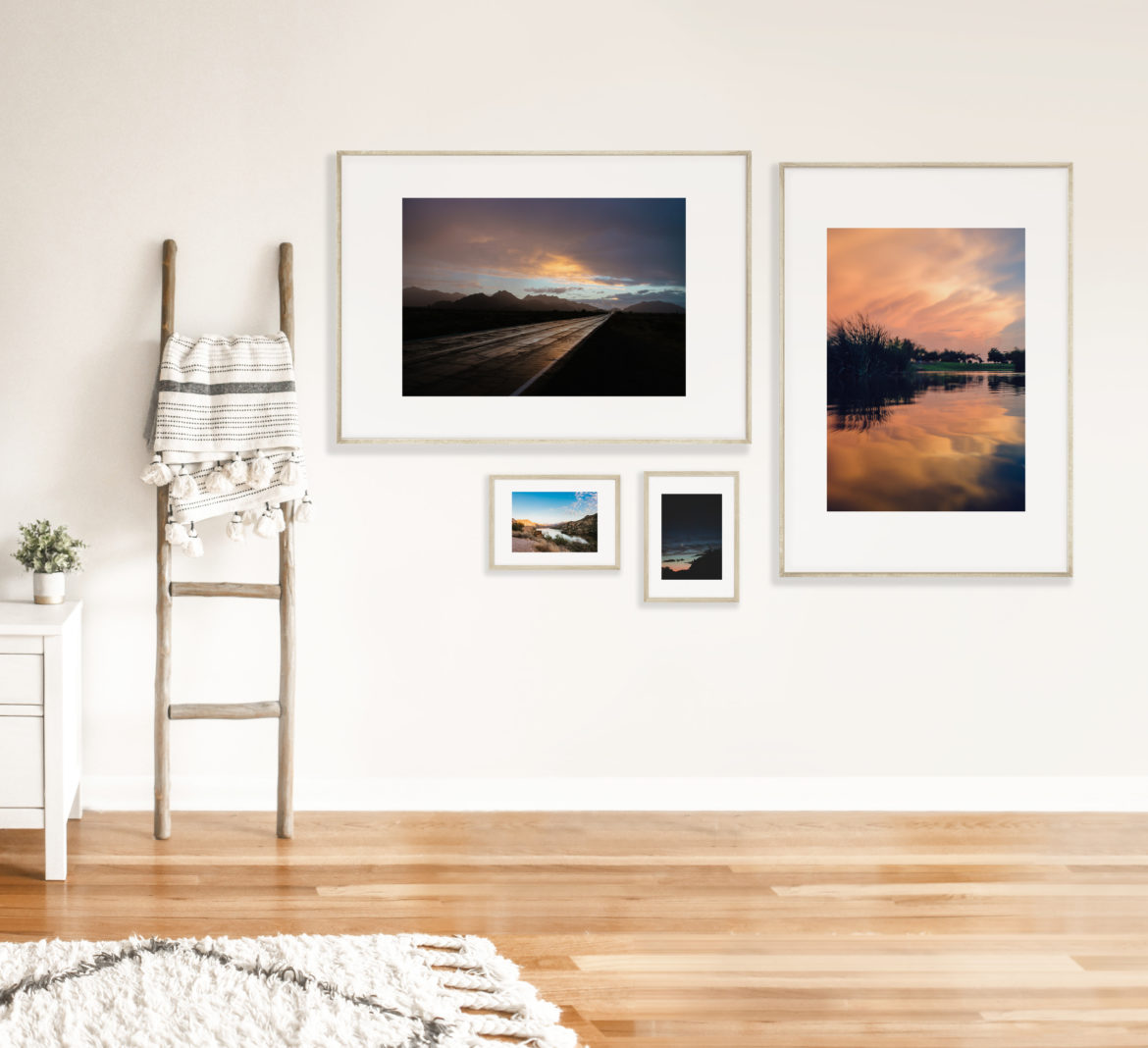There are two things to consider when framing your art: preservation and aesthetics. You want your pieces to last a long time and to look beautiful on display. Framing can help you to protect your art and elevate its presentation.
When I moved into my home, my walls were blank for months. First I struggled to choose the right art for each space, and once that was done, I also had to decide how to frame (or not frame) that art, and actually get it hung. This guide is is intended to help you simplify the process of choosing a frame and displaying your beautiful art prints.
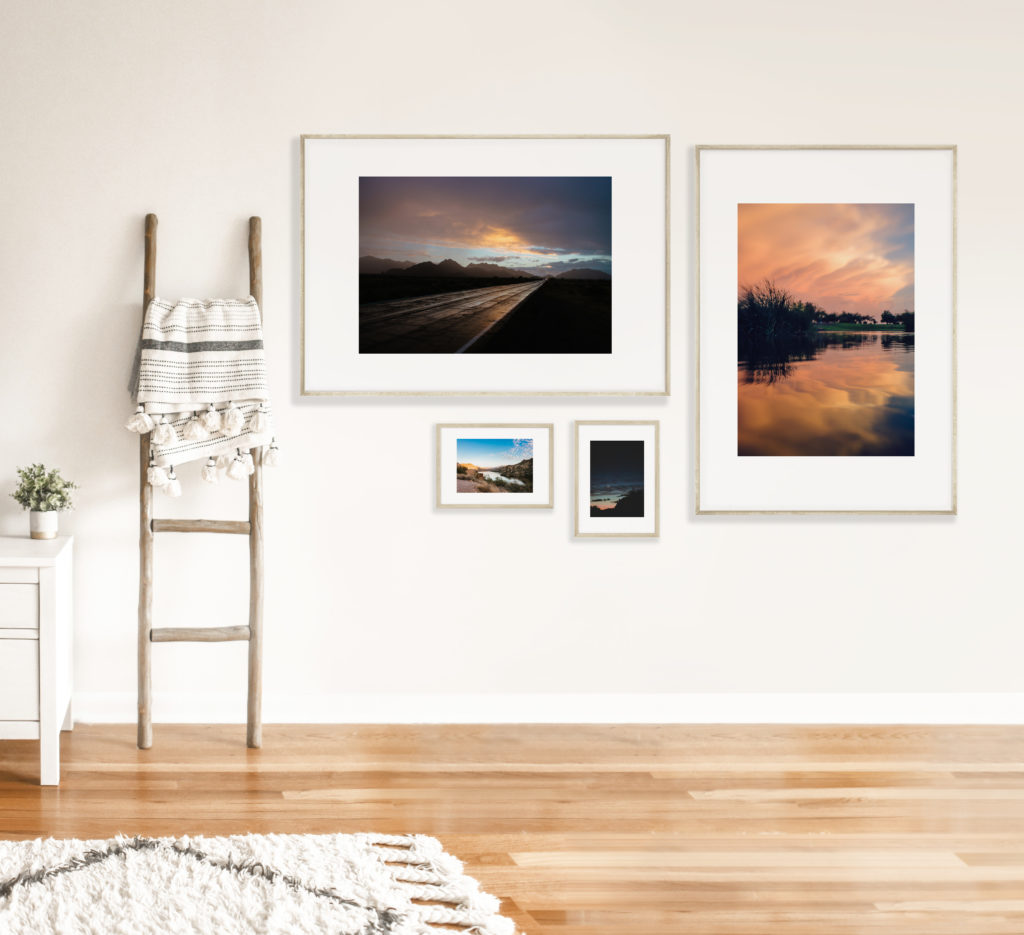
Preserving Your Art
Materials described as “archival quality” or “acid free” will protect your art from discoloring and damage. The back of the frame will keep dust out, and the front, whether glass or acrylic, can be treated to protect against UV rays, which can fade your prints. You will also want to consider where you hang your art. Hanging in the direct sun can cause your prints to fade over time.
What is Matting?
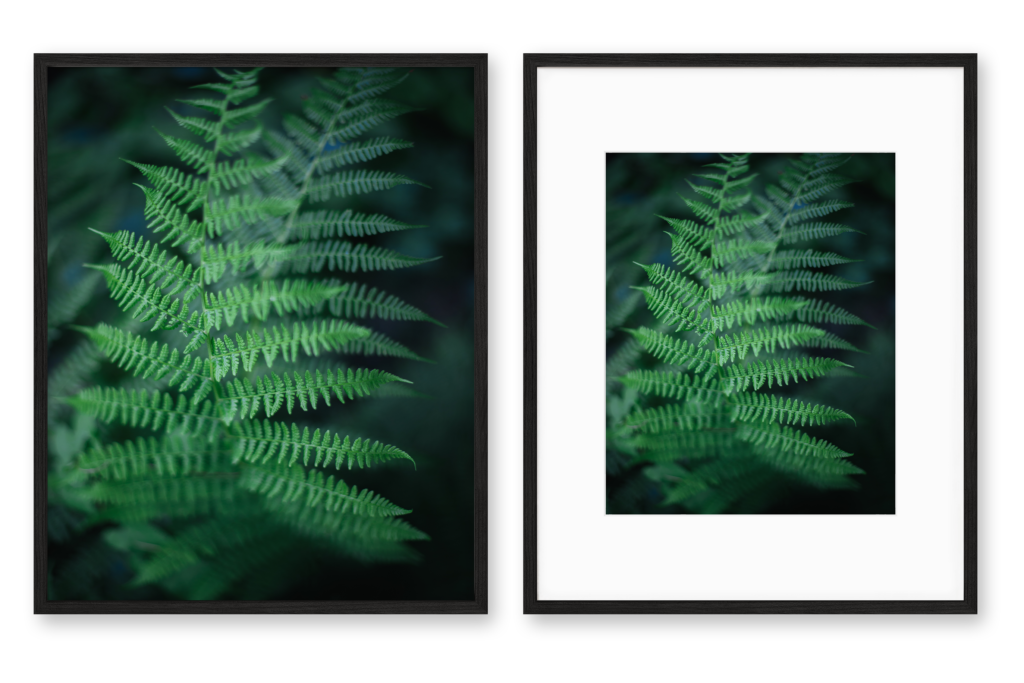
Artwork: Green Ferns, prints available in various sizes
A mat is a thick piece of paper or board that creates a border of material around the art, creating a space between the art and the frame. This extra space increases the visual size of your art piece, draws the eye to the art, and adds a level of polish and sophistication. A clean white or off-white mat will make almost anything look amazing. You can choose different colors for mats as well, but be careful to choose something that doesn’t distract from the art itself.
A mat will be touching your art, so you will want to make sure it is archival or acid free. Use archival or acid-free mounting tape to secure your print to the back of the mat before placing it into the frame. This will keep the print from sliding in the frame over time.
Deciding whether to mat or not will affect the size frame you will need for your piece. If you decide not to mat, buy a frame that is the same size as your print, for example an 8×10 frame for your 8×10 photograph. If you are using a mat, you will need to buy a frame that is big enough for the outer dimensions of the mat, or a frame that comes with a mat. In the latter case, you will want to buy a frame with a mat opening that is the same size as your print. For example, an 11×14 with a 8×10 mat opening for your 8×10 print.
Frame
The frame itself can come in many different styles. Again, consider what sort of frame will compliment the art and your space. When in doubt, a simple gallery frame in a white, black, or wood finish always looks fantastic.
Glass
There are several different options to choose from for the glass in your frame. Regular plate glass is the cheapest option, but is reflective and doesn’t block UV rays. Conservation and museum glass are made to block UV rays and be less reflective, but they will cost more. Finally, you can opt for acrylic instead of glass, which is cheaper, but will provide UV and infrared protection.
Hanging Your Art
When you’re deciding where to hang your art in your home, consider whether you want to hang a single statement piece, or whether you want to hang multiple pieces together to create a gallery wall. When creating a gallery wall, lay out your pieces on a flat surface first, to visualize how it will look all together on your wall. It’s much easier to rearrange before you start putting holes in the walls!
Measure out the size of each piece and mark out their intended spaces on the wall with painters tape to help visualize how it will look on the wall.
Have some hold up the art where you’re considering hanging it so that you can view it from a distance and assess how it looks. Be careful not to hang it too high, or it can look disconnected from the rest of your space.
Once you’ve decided where you want it, start hanging. Use a level to check the straightness of the frame. You can buy a picture hanging kit to help you visualize where to place nail holes and get it right the first time.
Other Display Ideas
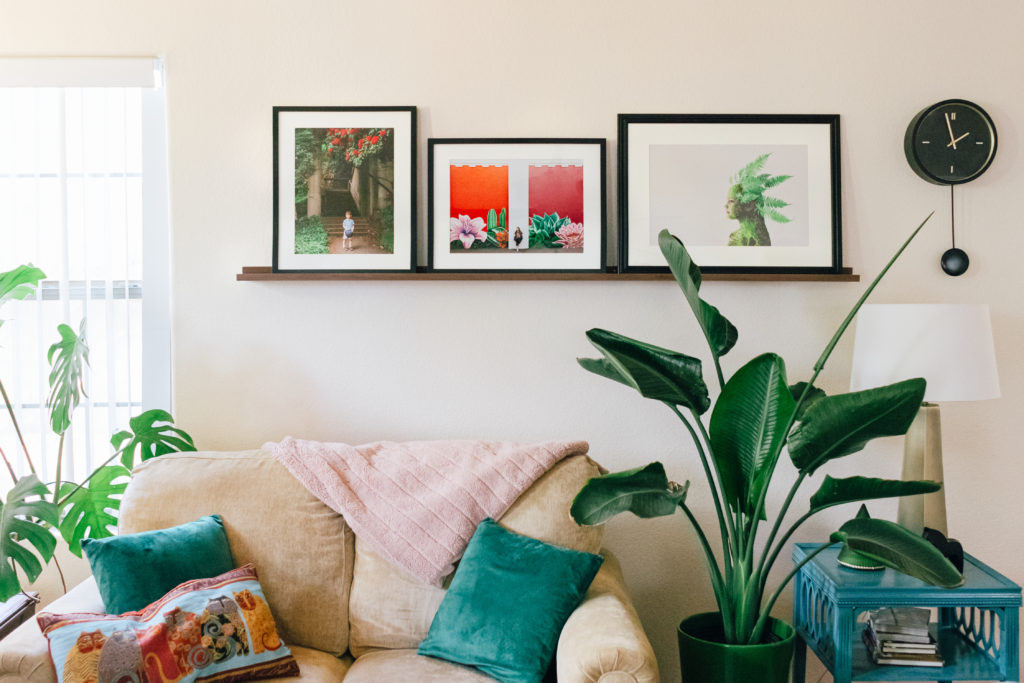
Picture Ledges. Above is an image of a picture ledge I have in my living room. This is a great way to display multiple images that can easily be changed out as you please.
Bulldog or binder clips. You can clip your print with one or two of these and then hang the clip.
Clipboards. Clipboards holding prints and then mounted to the walls can create a casual, fun display.
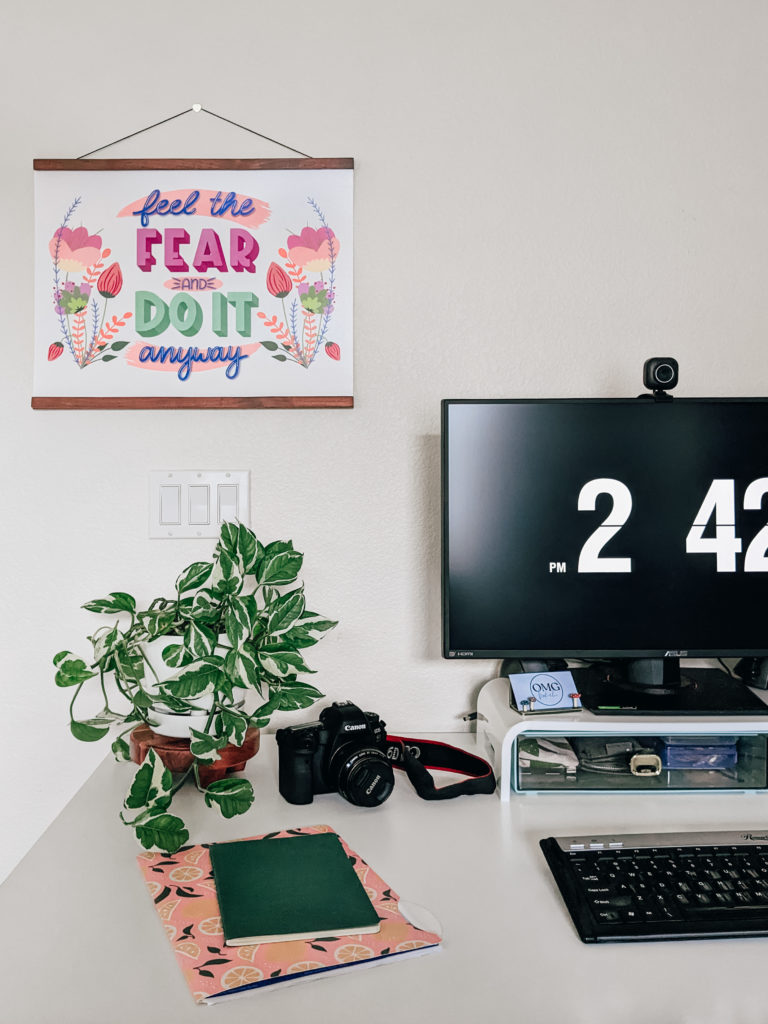
Magnetic poster hangers. These consist of two sets of magnetic bars you put at the top and bottom of your image and then hang from the attached string.
Resources/Where to Buy Frames
- Frames in standard sizes are easy to find at Target or Michaels. Michaels also provides custom framing.
- IKEA is a great place to find affordable frames in a variety of sizes.
- Framebridge is an online resource where you can send in what you need framed and they do all the work.
- Art to Frame is a good online source for frames.
I hope this guide helps you to get your art on your walls so you can start enjoying it everyday! If you’re in need of some fresh art for your walls, check out my latest work here.

